| |
Innovative thinking leads to a breakthrough
After returning to Japan, the team set to work with the latest computer-aided design analysis technologies to translate what they had learned in Europe into specific design plans. In order to maintain the important functional qualities of a scooter, it was decided that a full step-through leg space was essential. Also, for the sake of convenience, helmet storage space was also deemed a necessity. What's more, to further improve riding comfort, the team undertook a review of what the tolerable vibration level should be.
"In the case of motorcycles, a certain level of vibration is often desirable as a factor that gives "flavor" or "pulse" to the riding experience. But we decided that in the case of a scooter, vibration should be reduced to the lowest level possible."
Another major problem that Mr. Suzuki and his team tackled was the limitations in handling stability for the high speed in conventional scooters adapting a rear unit swing mechanism. The conventional wisdom in scooter design at the time was to think of the engine and wheel as one unit and use the link in part to cut vibration.
Throwing out the conventional approach, Mr. Suzuki and his team decided to attempt a design the separated the motion of the engine from that of the wheel completely by mounting the engine directly on the frame with rigid mounts, as is done with a motorcycle. But, simply doing that would give the scooter a vibration level equivalent to that of a motorcycle, which could spoil its comfort as a scooter. Finally, the solution the team arrived at was to develop a new engine with a horizontally-opposed reciprocating balancer. Mr. Suzuki recalls, "The breakthrough came when we decided why not get rid of the vibration in the engine itself. But the decision to go with a twin cylinder 500cc engine brought the vibration problem to the forefront again, so we began investigating the possibilities of different engine layouts."
The adoption of the new engine design also offered advantages in other areas. For example, the fact that it had a lower engine height made room for storage space above the engine. Also, it made it possible for the designers to optimize the front-rear weight distribution.
"In contrast to the Majesty, which has a front wheel weight ratio of 38%, we were able to achieve a front 47% to rear 53% balance on our prototype. This is virtually the same ratio as a sports type motorcycle and it guaranteed a high level of handling performance."
In order to handle the power from the big-displacement 500cc engine, a compact, rubber-belt Continuously Variable Transmission (CVT) system was adopted. Drive force is conveyed to the rear unit by means of a two-step linked silent-type chain built into the rear arm. In addition to being maintenance-free, this unit also contributed to overall compactness.
In order to realize the design goal of a scooter with a sports type chassis and because engine vibration was low enough to eliminate the need for rubber mounts, it was decided to adopt a diamond-type tubular frame with rigid engine mounts. This made it possible to keep the overall weight of the frame itself to the same level as the Majesty's.
What's more, unlike a conventional scooter, the front fork was given a motorcycle-type structure where the tops of the inner tubes are held by the handlebar crown. And, for a lower center of gravity and improved mass concentration, the same type of low mono-type suspension as the Road Star XV1600 was adopted, with its front end attached directly to the front end of the engine and the rear end attached directly to the rear arm. Furthermore, computer-aided design analysis technology contributed to the design of new 14-inch front and rear wheels that contributed to increased handling stability. And, as a measure to further improve the concentration of weight, the fuel tank was repositioned toward the center of the chassis.
Meanwhile, the exterior styling featured dual headlights for a sleek, sharp image and a wide array of appointments designed to emphasize a feeling of sprite sportiness. And, since tandem touring on high-speed roads on the weekends is popular in Europe, the size and shape of the rear seat was redesigned and a special easy-to-grasp aluminum grabbar added.
|
|
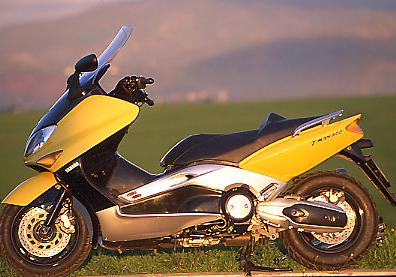 |
| Mr. Toshiyuki Suzuki,
project leader for the TMAX talks about the development. |
 |
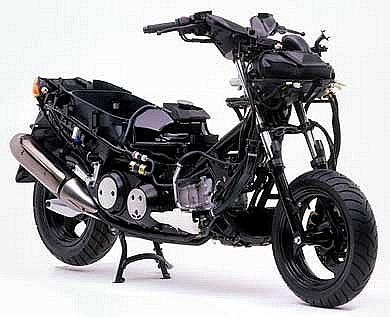 |
| Take a look under
the skin of the TMAX. It looks just like a supersport model,
featuring diamond type tubular frame, swinging arm, large
diameter front and rear disc brakes with the new parallel
twin cylinder engine as its power unit. |
 |
 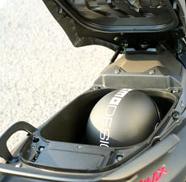 |
| 33 liters of under-seat storage can hold a full-face helmet or B4 size brief case for business use. TMAX even has a mobile phone pocket and charger! |
 |
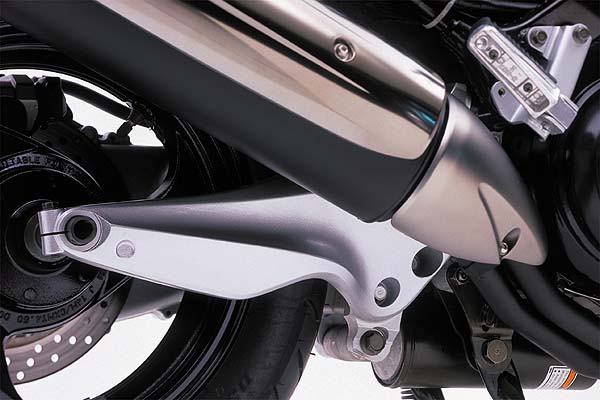 |
| The rear suspension incorporates a pull-type horizontal shock absorber, located under the engine to keep the center of gravity low. |
 |
 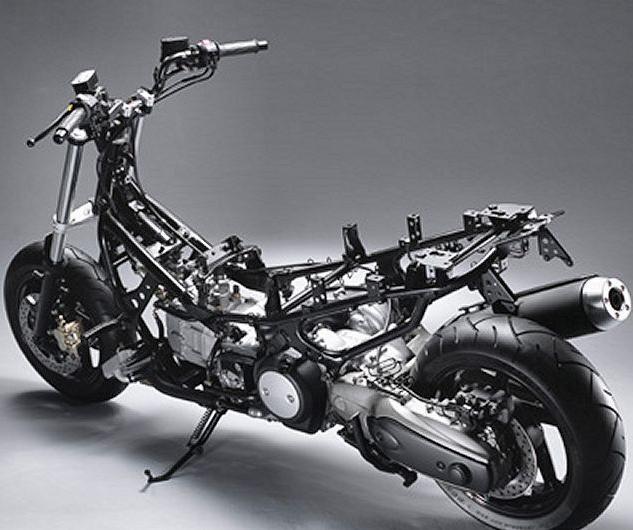 |
|

